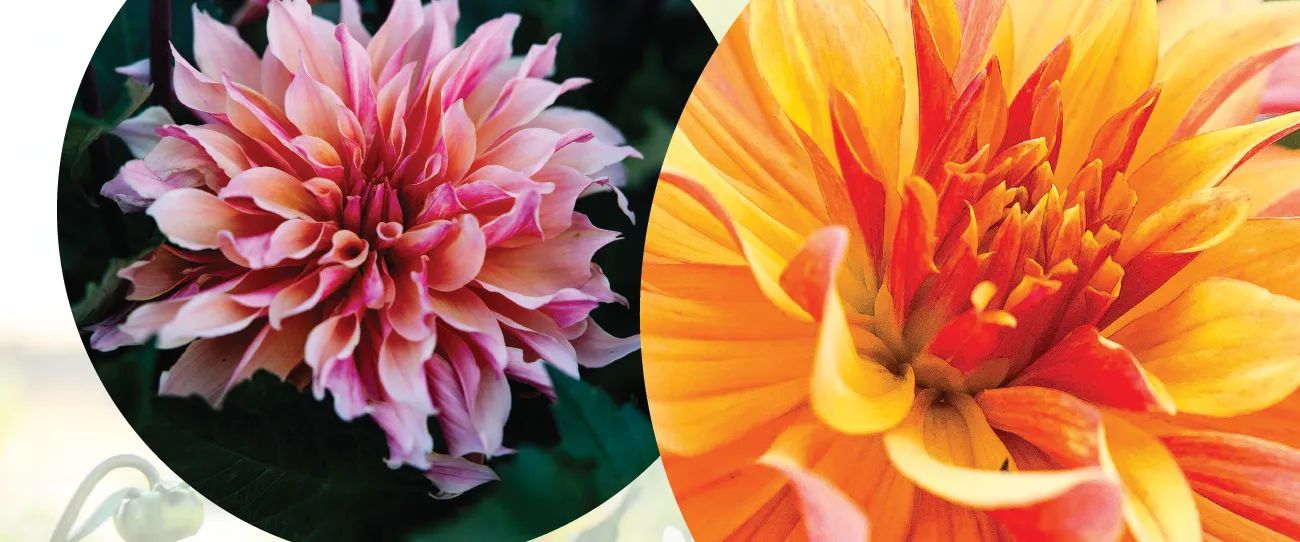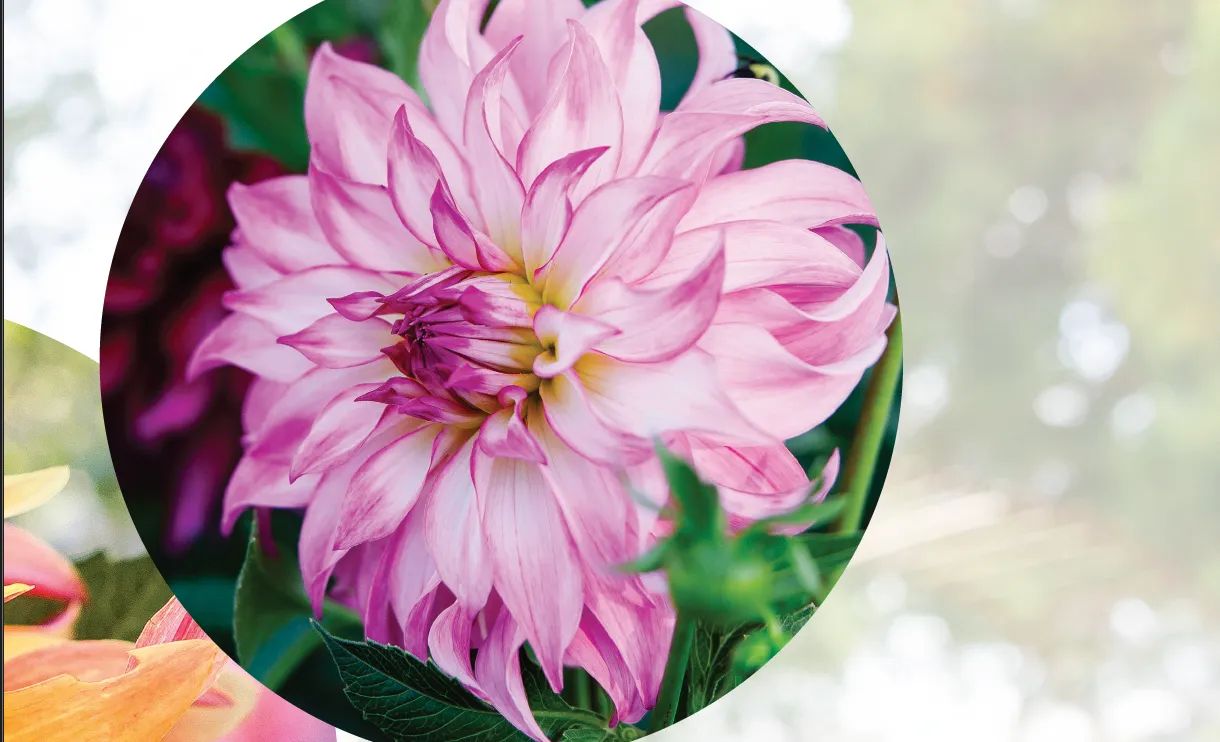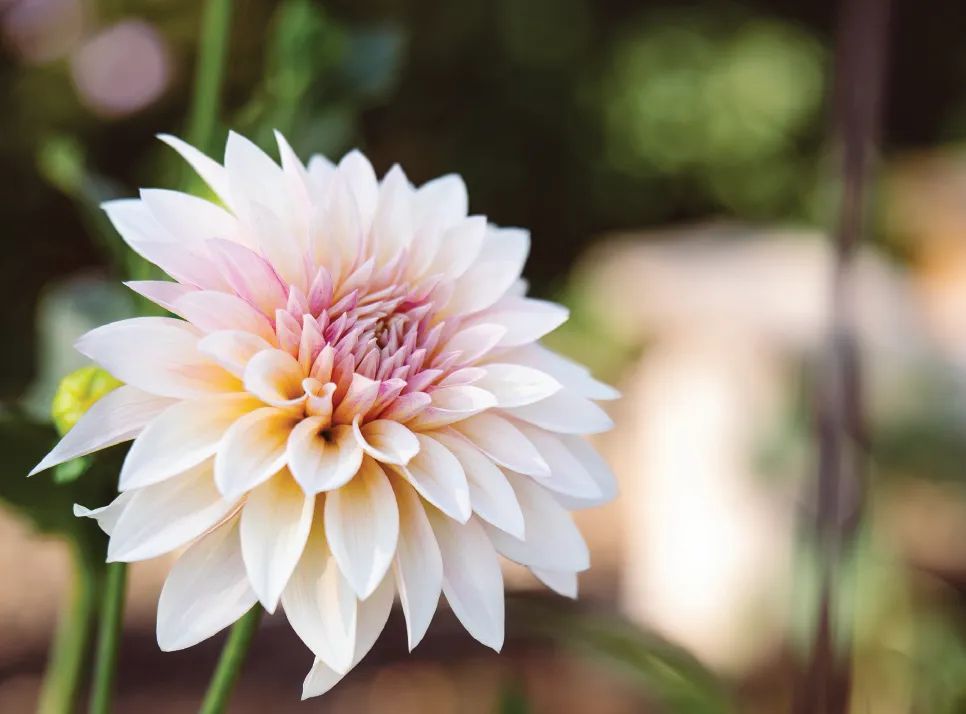
Blooming Passion The Art and Allure of Growing Dahlias
May 2025
Article by Lori Kraft, as told to Stephanie Toews and photos by Lovely Hitchcock
Imagine your ideal Mother's Day: a sunlit morning spent planting flowers, surrounded by your family's laughter and love of your family. The most cherished gift? Having everyone join in, their hands in the soil beside yours, creating memories that bloom as beautifully as the gardens you tend together.
Some time ago, gardening enthusiast Lori Kraft received a message from a friend. Knowing several people shared a passion for gardening, she mentioned that her father, Swede, was a member of the local Dahlia society in Missoula. They were selling Dahlia tubers, and although this gardener’s space was already filled with zinnias, hollyhocks, and the like, dahlias had never been part of the collection. Taking a leap of faith, a small order was placed.
That spring, the tubers arrived, accompanied by a beautifully written note detailing the varieties, each named with its American Dahlia Society (ADS) designation, species, form, color, height, and growing information. "At the time, I didn't fully grasp what I had gotten into; I simply thought I would plant them and get flowers in return," recalls Lori. The detailed information seemed excessive, but following the advice to plant around Mother's Day proved wise.
Originating in the high plains of Mexico, dahlias boast a rich history. In the late 18th century, Vicente Cervantes, director of the Botanical Garden in Mexico City, sent plant parts to Abbe Antonio José Cavanilles at the Royal Gardens of Madrid. Cavanilles successfully cultivated these plants, naming the genus "Dahlia" in honor of Swedish botanist Anders Dahl. Today, there are over 40 recognized species of dahlias, each contributing to the vast array of forms, shapes, and colors seen in gardens worldwide.
Cafe Au Lait Dahlia

And grow they did! With the first bloom, a passion was ignited. "Little did I know that four years later, Swede’s enthusiasm would have fostered a new love, or shall we say addiction, that has become one of my favorite pastimes," shares Lori. Swede soon had a small group under his wing, exchanging tips and tricks, sharing photos of beautiful bouquets, and enjoying afternoons touring each other’s gardens and homes.
Mother’s Day often brings a rush of shoppers filling their carts with plants for Mom, and among the favorites are dahlias. Many local gardeners are familiar with the smaller Mignon dahlias, which are perfect for brightening patio pots and are often found at nurseries. But for those truly captivated by these blooms, the real passion lies in growing dahlias as part of a flower-filled landscape.
This is no simple endeavor; dahlias demand dedication. From planting and watering to staking and fall digging, they require hands-on care, as they are annuals in many local climates. "After the first hard frost, the stalks are cut down, and the plants are carefully dug up to reveal the hidden treasure beneath, a clump of tubers," explains Lori. These tubers are stored over the winter, divided, and then replanted in the spring, multiplying the beauty for seasons to come. "Eight new plants can be created from a single clump of tubers."
For serious dahlia growers, record-keeping is just as importantas planting. Each variety has its special name, which is recorded by the hybridizer who first introduced it. From the ever-popular Café Au Lait to uniquely named blooms like Shaggy Chic, Polka, and Bumble Rumble, every dahlia carries its distinct color, shape, and charm. The latest craze? So-called "Unicorn" dahlias are rare, newly hybridized varieties such as Fawn, Kelgai Ann, and Hapet Old Charm. "These coveted tubers can fetch anywhere from $40 to $50 each, reflecting their rarity and desirability among collectors," notes Lori.

"With the sun shining, shovel in hand, and a basket brimming with tubers, I'm ready to plant and nurture the next generation of dahlias”
-Lori Kraft
While all of this may sound overwhelming at first, once you step into the world of dahlias, their rich history, stunning diversity, and sheer volume of varieties become an irresistible obsession. Many gardeners soon find themselves eyeing every available inch of their yards for just one more dahlia plant.
The current dahlia craze has taken the internet by storm, with flower farms growing and selling thousands of tubers yearly. Social media is filled with dahlia groups, heirloom dahlia communities, and even online marketplaces for tuber sales. These flowers are flourishing in popularity, from wedding bouquets brimming with dahlias to local farm stands selling fresh-cut bunches. Even Montana has its own dedicated Dahlia Facebook group, where enthusiasts come together to share growing tips, swap varieties, and celebrate their latest blooms.
Embarking on the journey of hybridizing dahlias has become a fascinating endeavor for many. While planting tubers yields clones of the parent plant, the true excitement lies in harvesting seeds from the dahlia's bloom. "Each seed holds the potential to combine traits in unique ways, leading to entirely new varieties," explains Lori. After three years of cultivating these seedlings and ensuring they meet specific criteria, they can be officially registered with the American Dahlia Society at dahlia.org.
For those looking to start their personal dahlia journey, online communities and local gardening groups provide a wealth of knowledge and encouragement. Whether you plant just a few in patio pots or transform your yard into a dahlia wonderland, one thing is certain: once you start growing these stunning flowers, you may never want to stop.
As the days grow longer and temperatures rise, dahlia growers everywhere anticipate their favorite time of the year.
Originally printed in the May 2025 issue of Simply Local Magazine
Check this article out in the digital issue of Simply Local here!





